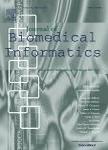版权所有:内蒙古大学图书馆 技术提供:维普资讯• 智图
内蒙古自治区呼和浩特市赛罕区大学西街235号 邮编: 010021

作者机构:Univ Chinese Acad Sci Sch Math Sci Beijing Peoples R China Chinese Acad Sci Key Lab Big Data Min & Knowledge Management Beijing Peoples R China Yale Univ Dept Biostat New Haven CT USA
出 版 物:《JOURNAL OF BIOMEDICAL INFORMATICS》 (生物医学情报学杂志)
年 卷 期:2023年第144卷第1期
页 面:104434页
核心收录:
学科分类:1001[医学-基础医学(可授医学、理学学位)] 0812[工学-计算机科学与技术(可授工学、理学学位)] 10[医学]
基 金:National Natural Science Foundation of China [12171454, U19B2040] NIH, United States [CA204120, HL191691]
主 题:DNN Integrative analysis Alignment High-dimensional Penalization
摘 要:Objective: Deep neural network (DNN) techniques have demonstrated significant advantages over regression and some other techniques. In recent studies, DNN-based analysis has been conducted on data with high-dimensional input such as omics measurements. In such analysis, regularization, in particular penalization, has been applied to regularize estimation and distinguish relevant input variables from irrelevant ones. A unique challenge arises from the lack of information attributable to high dimensionality of input and limited size of training data. For many data/studies, there exist other data/studies that may be relevant and can potentially provide additional information to boost performance. Methods: In this study, we conduct integrative analysis of multiple independent datasets/studies, with the goal of borrowing information across each other and improving overall performance. Significantly different from regression-based integrative analysis (where alignment can be easily achieved based on covariates), alignment across multiple DNNs can be nontrivial. We develop ANNI, an Aligned DNN technique for Integrative analysis with high-dimensional input. Penalization is applied for regularized estimation, selection of important input variables, and, equally importantly, information borrowing across multiple DNNs. An effective computational algorithm is developed. Results: Extensive simulations demonstrate competitive performance of the proposed technique. The analysis of cancer omics data further establishes its practical utility.